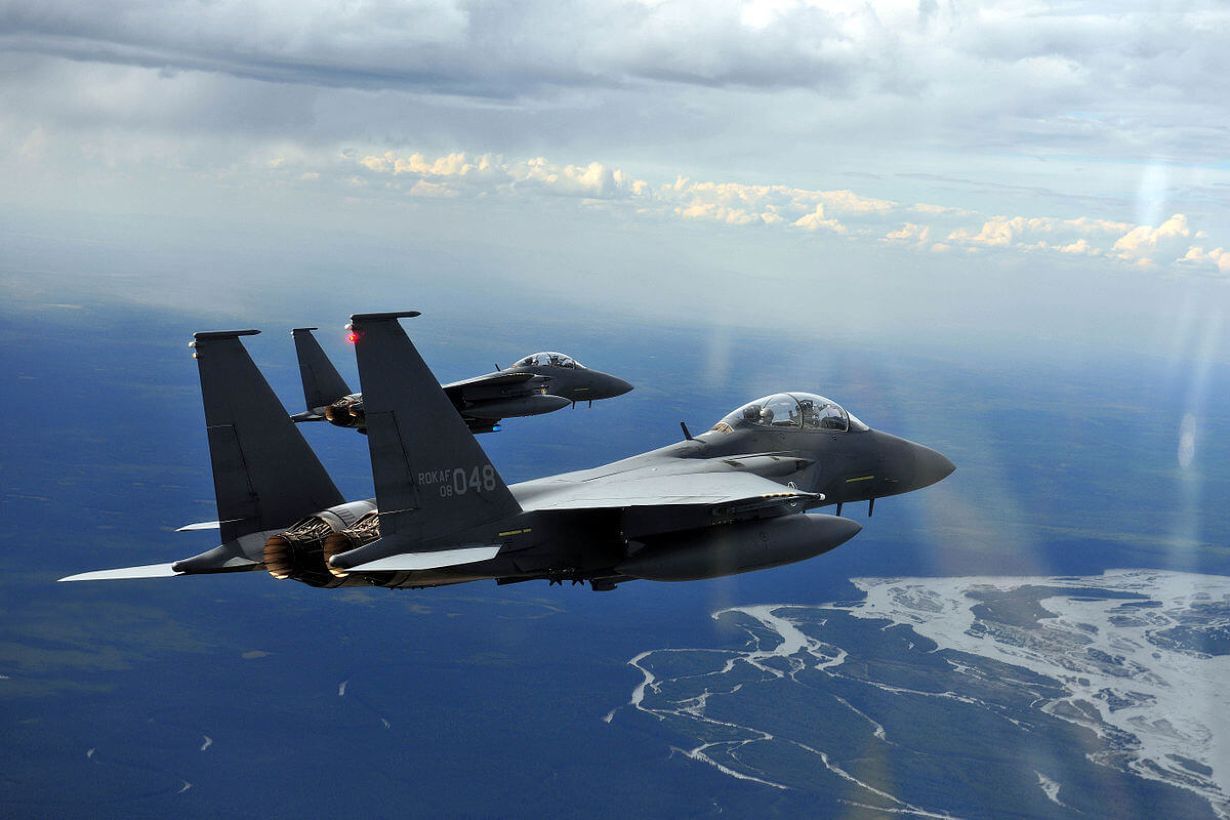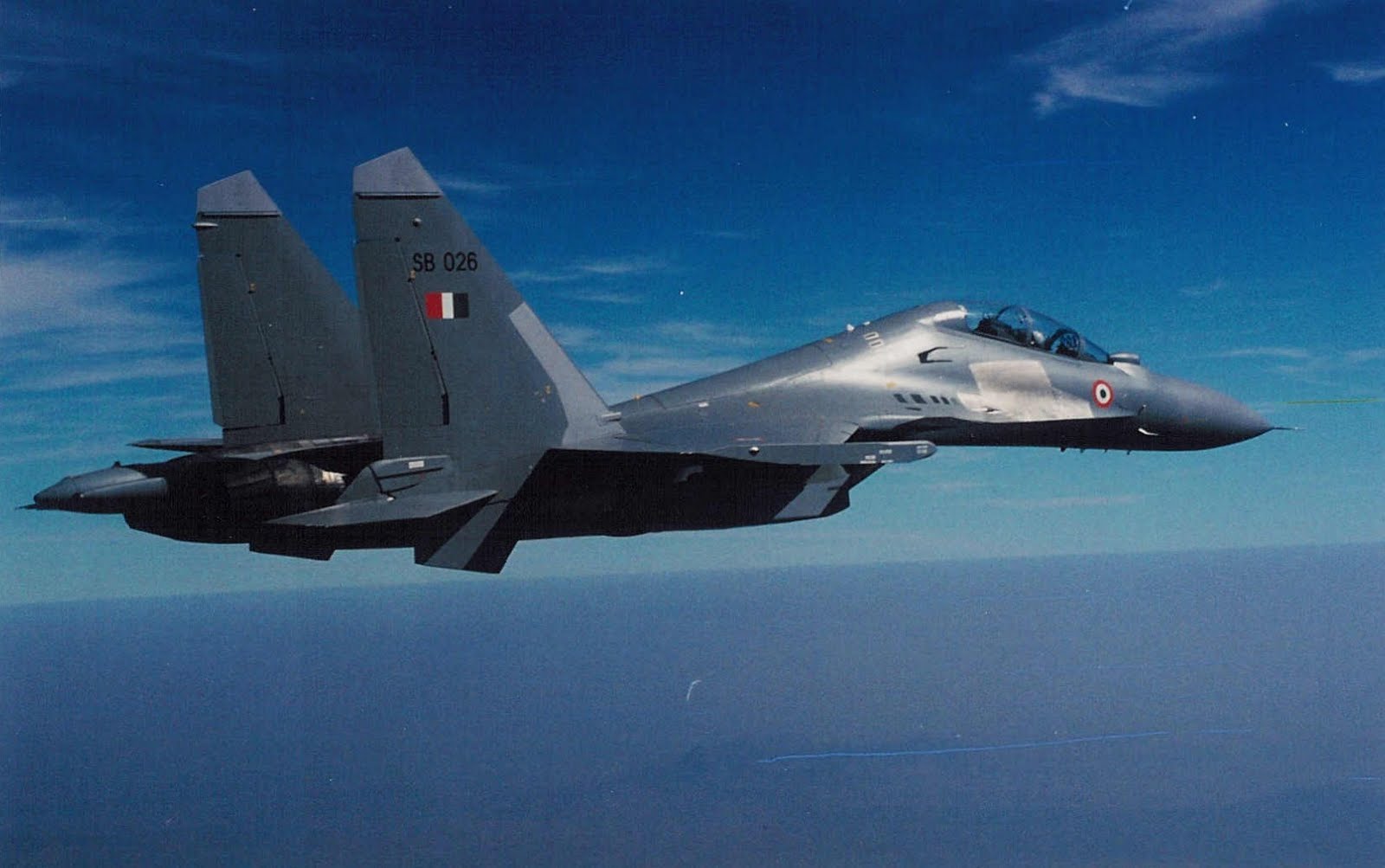According to a statement by South Korea’s Air Force, South Korea and India recently conducted joint air drills during the major multinational Exercise Pitch Black in Australia. The drills, involving South Korean F-15K and Indian Su-30MKI fighter jets, took place on July 18 over an air base in Darwin, northern Australia.
The exercises were designed to improve the pilots’ comprehension of each other’s aircraft’s various traits and tactics, promoting greater interoperability between the two air forces.
While the South Korean Air Force did not disclose the number of aircraft involved or specific activities undertaken during the drills, it highlighted the importance of such exercises in building stronger military ties and operational proficiency.
An image released by the South Korean Air Force shows South Korean F-15K and Indian Su-30MKI fighter jets preparing for takeoff, illustrating the collaboration between the two nations’ air forces.
The joint drill with India could benefit South Korea by offering their pilots valuable experience and insights into the Su-30 fighter jet, which China also operates.
Gaining an understanding of the Su-30’s characteristics and tactics through direct interaction with Indian pilots might enable South Korean pilots to devise more effective strategies and countermeasures.
Exercise Pitch Black, which began on July 12 and will run until August 2, is the largest in its 43-year history. It features participation from 20 countries, over 140 aircraft, and approximately 4,400 military personnel.
South Korea has deployed six F-15K fighters and around 100 troops, while India’s contingent includes over 150 highly skilled Air Warriors, pilots, engineers, technicians, and controllers.
The Indian Air Force (IAF) has deployed Su-30MKI multirole fighters, along with the C-17 Globemaster and IL-78 Air-to-Air Refueling aircraft in combat support roles.
However, the exercise experienced a setback on July 24 when an Italian Air Force Eurofighter Typhoon jet crashed after encountering an “unknown issue” during a training flight. The Australian Air Force confirmed that the pilot ejected safely and was transported to a hospital for precautionary checks.

F-15 Vs. Su-30: A Clash of Titans
In the realm of modern military aviation, the F-15 and Su-30 fighter aircraft stand out for their exceptional capabilities. Both jets are renowned for their performance in air superiority roles, yet they embody different design philosophies and operational strategies reflective of their countries of origin.
This often leads to the intriguing question: Which aircraft would prevail if they faced each other in a real warfare scenario?
The question gained significant attention during the 2008 Red Flag exercise, where the F-15 and Su-30 MKI faced off in a highly publicized engagement.
Red Flag, a renowned air combat exercise, features multiple scenarios designed to provide realistic combat settings. In the 2008 edition, the Indian Air Force (IAF) deployed its Su-30MKIs to engage with the USAF’s F-15s, marking the first time the Su-30MKI participated in an international wargame of this scale.
In the aftermath of these wargames, USAF pilots anonymously shared videos of their assessments on YouTube. One USAF officer, while boasting about how the F-15 pilots “amazed” their Indian counterparts, admitted that the American fighters would soon lose their competitive edge to the Russian-made Su-30MKIs.
He highlighted the experience F-15 pilots gained from flying against Lockheed Martin’s F-22’s thrust vectoring capabilities, which they exploited to reveal vulnerabilities in the Su-30MKI during hard turns.
The USAF pilot described a scenario where the Su-30MKI’s thrust vectoring capability, while initially impressive, resulted in the aircraft rapidly losing altitude.

“So we start to pull in on him, and then all of a sudden you start to see the [Su-30’s aft-] end kick down, and he starts doing vectored thrust,” the pilot recounted.
“But now he starts falling out of the sky. He’s falling out of the sky so fast that you don’t even have to go up. You just have to pull back on the stick a little bit, pull the throttle, go to guns, and come in and drill his brains out,” he added.
Several controversial claims were made by the USAF officer. He suggested that the IAF had issues with its Russian jet engines, that Indian pilots were prone to fratricide — shooting down friendly aircraft — and that the IAF required 60-second intervals between takeoffs, compared to the 30 seconds typical of other air forces.
He asserted that the F-15 could defeat the Su-30MKI, considered the most advanced fighter in the Su-30 series at the time.
However, these assertions must be contextualized within the constraints placed on the Su-30MKIs during the exercise. The Su-30MKI’s powerful Russian-made NIIP-BARS radar operated only in training mode, limiting its range and capabilities.
This self-imposed restriction was intended to prevent US intelligence from mapping the high-tech radar system. The hosts also imposed other restrictions, including barring the use of data links, chaff, and flares by the Indian pilots.
Consequently, when targeted by surface-to-air missiles, the Su-30MKIs were “shot down” due to the lack of situational awareness aids in the cockpit, which increased the workload on the aircrews. Further, the IAF’s most powerful air-to-air missile, the R-77, was not simulated in the exercises.
While the 2008 Red Flag exercise provided valuable insights into the capabilities of the F-15 and Su-30MKI, it is essential to recognize the limitations and restrictions that influenced the outcomes.
- Contact the author at ashishmichel(at)gmail.com
- Follow EurAsian Times on Google News





